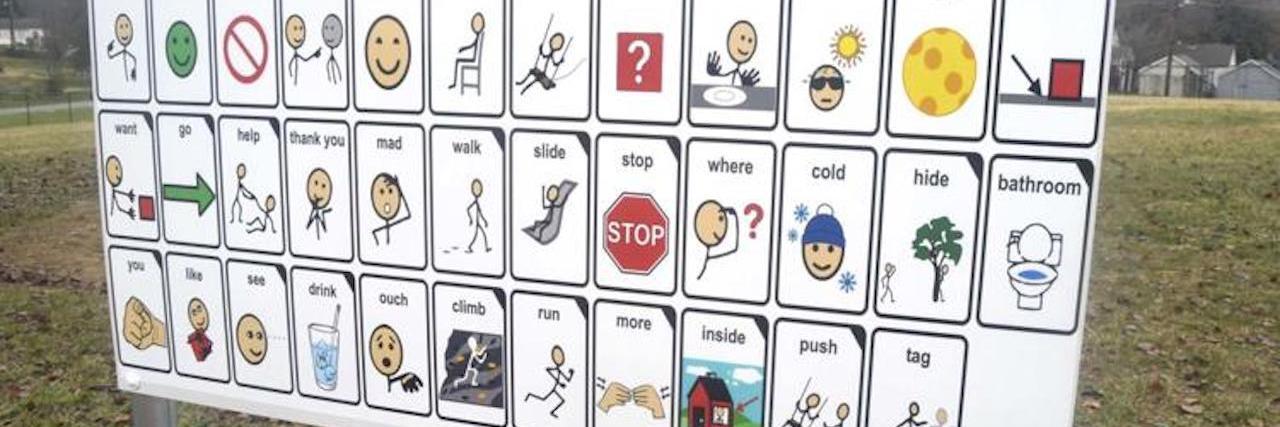School Installs Picture Communication Board to Make Recess More Inclusive for Nonverbal Students
Several Kentucky elementary schools received funding to install picture-based communication boards on the playground to make recess more inclusive for nonverbal students, a reminder of what true inclusion at school can look like.
According to the News-Enterprise, special education teacher Amelia Abell at Morningside Elementary School in Elizabethtown, Kentucky, secured grants to have three large, outdoor-standing communication boards with images noverbal students or students who struggle with language can use to express their needs to their peers and teachers. The images include pictures that represent expressions such as “your turn,” “ball,” “slide” and “stop.”
Communication boards or picture exchange communication system (PECS) boards allow nonverbal people to point at the board or hand others cards with pictures or symbols that represent what they want to communicate. The PECS system was developed in 1984 by Lori Frost and Dr. Andrew Bondy. It’s one accessible way for neurodiverse communicators to develop autonomy and agency.
Using PECS boards to assist nonverbal students isn’t new in schools, though the addition to playgrounds seems to be less common. Others, like “TippyTalk” creator Rob Laffan, harness technology to expand on PECS communication methods. Laffan, whose daughter is nonverbal and on the spectrum, designed TippyTalk to turn PECS pictures automatically into text messages that can be sent through mobile devices.
For nonverbal students, the addition of communication boards both in and outside of the classroom can help promote inclusion at school, which is more than just allowing kids with disabilities to sit alongside their typical peers.
“Inclusion is a great premise, and when done right, it’s fantastic for students! It teaches acceptance and understanding, and we certainly need more of that in our world,” wrote Mighty contributor Kaelynn Partlow, adding:
Inclusion done properly has educators present to facilitate games and or communication. Proper inclusion looks like special education students engaged and participating in activities to a degree that they are able to.
As someone with autism, I’d rather sit alone than sit in a room full of my peers whose conversations and body language are exclusive. Simply existing with typical peers is not my idea of true inclusion. I want to contribute to the conversation; I want to be noticed and feel accepted.
Header image via Trey Crumbie/The News-Enterprise

